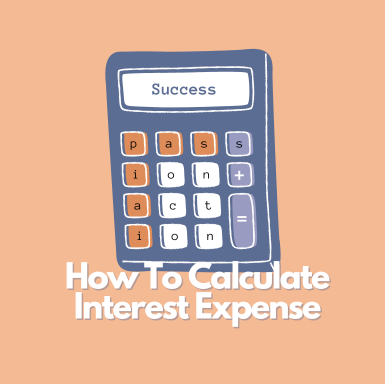How to calculate interest – expense interest expense is a crucial concept for businesses and individuals. It is the cost of borrowing money and can significantly impact an organization’s profitability and financial health.
What is Interest Expense?
Interest expense is the cost of borrowing money. It is the interest paid on loans or other forms of debt, such as bonds or notes payable. Interest expense is calculated based on the interest rate and the principal amount borrowed. The interest rate is usually expressed as an annual percentage rate (APR).
How is Interest Expense Calculated?
Interest expense is calculated using a simple formula. The formula is:
Interest Expense = Principal x Interest Rate x Time
Where:
The principal is the amount borrowed. Interest Rate is the annual interest rate expressed as a percentage Time is the length of time the loan is outstanding, described in years
Example Calculation
Let’s say a business borrows $100,000 at an annual interest rate of 5%. The loan is outstanding for one year. Using the formula above, the interest expense would be:
Interest Expense = $100,000 x 5% x 1
Interest Expense = $5,000Therefore, the interest expense for the loan is $5,000.
Why is Interest Expense Important?
Interest expense is essential because it can significantly impact an organization’s profitability and financial health. High-interest costs can reduce profits and cash flow, making it difficult for a business to invest in growth opportunities or meet financial obligations.
Types of Interest Expense
There are two types of interest expense: simple interest and compound interest.
Simple interest is calculated based on the principal amount borrowed and the interest rate. It does not take into account any interest earned on the claim.
Compound interest, on the other hand, takes into account the interest earned on the claim. It is calculated based on the principal amount, interest rate, and compounding frequency.
Factors Affecting Interest Expense
Several factors can affect interest expense, including the interest rate, the principal amount borrowed, the loan length, and the compounding frequency. The higher the interest rate, the higher the interest expense. The larger the principal amount borrowed, the higher the interest expense. The longer the loan is outstanding, the higher the interest expense. And the more frequently the interest is compounded, the higher the interest expense.
How to Reduce Interest Expense
There are several strategies that businesses and individuals can use to reduce interest expense. These include:
- Negotiating a lower interest rate
- Making larger payments to reduce the principal amount
- Shortening the length of the loan
- Refinancing the loan at a lower interest rate
- Consolidating multiple debts into a single loan
How Interest Expense Affects Businesses
Interest expense can significantly impact the profitability and financial health of a business. High-interest expenses can reduce profits and cash flow, making it difficult for a business to invest in growth opportunities or meet financial obligations. Therefore, it is essential for businesses to manage their interest expense carefully.
Interest Expense Affects Individuals
Interest expense can also impact individuals. For example, high-interest expenses on credit cards can lead to high levels of debt, making it difficult for individuals to save for retirement or other financial goals. Therefore, individuals need to manage their interest expenses carefully.
How Interest Expense Impacts Financial Statements
Interest expense is reflected on a business’s income statement and balance sheet. On the income statement, interest expense is subtracted from revenues to arrive at operating income. On the balance sheet, interest expense is reflected as a liability under the long-term debt section.
Interest Coverage Ratio
The interest coverage ratio measures a business’s ability to pay interest expenses on its debt. It is calculated by dividing earnings before interest and taxes (EBIT) by interest expense. A higher ratio indicates that a business is more capable of meeting its interest obligations.
Debt Service Coverage Ratio
The debt service coverage ratio measures a business’s ability to meet debt obligations. It is calculated by dividing earnings before interest, taxes, depreciation, and amortization (EBITDA) by total debt service. The entire debt service includes both interest and principal payments. A higher ratio indicates that a business is more capable of meeting its debt obligations.
Conclusion
In conclusion, interest expense is crucial for businesses and individuals. It is the cost of borrowing money and can significantly impact profitability and financial health. Interest expense is calculated based on the interest rate, the principal amount borrowed, and the time the loan is outstanding. It is reflected on the income statement and balance sheet. It can be managed by negotiating a lower interest rate, making larger payments, shortening the length of the loan, refinancing the loan, or consolidating multiple debts into a single loan. Businesses and individuals must manage their interest expenses carefully to ensure financial stability and achieve their goals.
